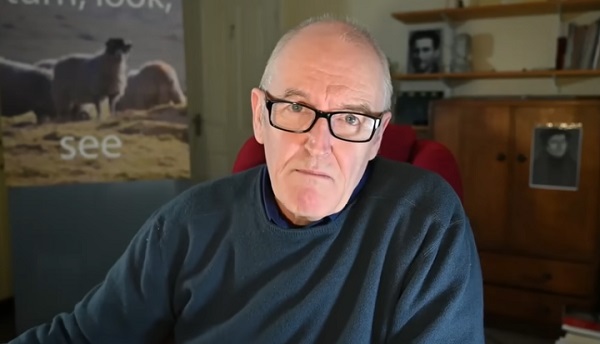Uncategorized
Province encouraging Alberta Doctors to see more patients by lifting daily cap

Improving Albertans’ access to doctors
To help increase patient access to physicians, there will no longer be a daily cap on the number of visits a physician can fully bill.
During the negotiations with the Alberta Medical Association (AMA), Alberta’s government heard that Alberta’s doctors could safely see more patients than the current cap allowed.
Albertans want to know that they can see a doctor when they need one, and physicians want to be able to provide Albertans with the health-care services they need. By changing the daily cap policy, some of the immediate pressures for services provided by general practitioners and specialists, including pediatricians and ophthalmologists, will be addressed. By lifting the cap, physicians will be fully compensated for every visit rather than receiving a discounted rate if they provide more than 50 visit services in one day, which is the current practice.
“We’re moving forward to implement the new agreement, starting with ending the daily visit services cap policy and working to put rate increases in place. We’ve heard from some physicians that the daily visit cap was having a negative impact on patient access, so this change addresses those concerns. It is also part of the new agreement with the AMA where we are listening to physicians and working with them as partners moving forward.”
“The AMA agreement allows physicians and government to work together on challenges facing patients and physicians in the health-care system. This early step to remove the services cap is an important example that will allow more physicians to care for more patients while helping to stabilize physician practices.”
Lump sum payment
The agreement between the AMA and the province also includes a one per cent rate increase in each of the next three years and a one per cent recognition lump sum payment in 2022-23.
Alberta physicians were at the forefront of the pandemic and the one-time payment for eligible practising physicians is in recognition of that work during the 2021-22 fiscal year. This lump sum payment is approximately $45 million and will go to the AMA to distribute to their members by the end of 2022.
In addition to the lump sum payment, the government is working with the AMA to implement the one per cent rate increase for 2022-23. The increase applies to fee-for-service and alternative relationship plan rates, providing an additional $46 million to physicians.
As outlined in the AMA agreement, the rate increase is heavily weighted to specialties facing the greatest pressures, such as family medicine. Alberta’s government and the AMA are working together to distribute these increases across and within specialties. Increases will be effective April 1, 2022, and are expected to be finalized by March 31, 2023.
Quick facts
- The daily visit services cap policy was introduced as part of the Physician Funding Framework in 2020.
- The intent of the policy was to support quality patient care by reducing physician burnout while addressing fiscal constraint for the province.
- It applies to all physician services that are defined in the Schedule of Medical Benefits (SOMB) as “visits” with a “V” category code that physicians provide to patients in person, including physician office visits, consultations and counselling services. Procedures and tests that physicians provide are not billed as visits.
- Under the current policy, physicians are compensated 100 per cent for up to 50 visit services billings in a day, 50 per cent for between 51 and 65 visit services, and there is no compensation for visit services billings greater than 66.
- Physicians working in rural and remote areas, hospital visits and virtual care are exempt from the current policy.
- The policy change (to lift the cap) aligns Alberta with most other jurisdictions.
- Alberta Health is working on updating the SOMB and billing system to operationalize this change. A Medical Bulletin and a new SOMB will be posted when information technology changes are complete.
- The daily visit services cap policy change will be reviewed and its impacts assessed before determining the future policy beyond the current fiscal year.
Uncategorized
Cost of bureaucracy balloons 80 per cent in 10 years: Public Accounts

The cost of the bureaucracy increased by $6 billion last year, according to newly released numbers in Public Accounts disclosures. The Canadian Taxpayers Federation is calling on Prime Minister Mark Carney to immediately shrink the bureaucracy.
“The Public Accounts show the cost of the federal bureaucracy is out of control,” said Franco Terrazzano, CTF Federal Director. “Tinkering around the edges won’t cut it, Carney needs to take urgent action to shrink the bloated federal bureaucracy.”
The federal bureaucracy cost taxpayers $71.4 billion in 2024-25, according to the Public Accounts. The cost of the federal bureaucracy increased by $6 billion, or more than nine per cent, over the last year.
The federal bureaucracy cost taxpayers $39.6 billion in 2015-16, according to the Public Accounts. That means the cost of the federal bureaucracy increased 80 per cent over the last 10 years. The government added 99,000 extra bureaucrats between 2015-16 and 2024-25.
Half of Canadians say federal services have gotten worse since 2016, despite the massive increase in the federal bureaucracy, according to a Leger poll.
Not only has the size of the bureaucracy increased, the cost of consultants, contractors and outsourcing has increased as well. The government spent $23.1 billion on “professional and special services” last year, according to the Public Accounts. That’s an 11 per cent increase over the previous year. The government’s spending on professional and special services more than doubled since 2015-16.
“Taxpayers should not be paying way more for in-house government bureaucrats and way more for outside help,” Terrazzano said. “Mere promises to find minor savings in the federal bureaucracy won’t fix Canada’s finances.
“Taxpayers need Carney to take urgent action and significantly cut the number of bureaucrats now.”
Table: Cost of bureaucracy and professional and special services, Public Accounts
| Year | Bureaucracy | Professional and special services |
|
$71,369,677,000 |
$23,145,218,000 |
|
|
$65,326,643,000 |
$20,771,477,000 |
|
|
$56,467,851,000 |
$18,591,373,000 |
|
|
$60,676,243,000 |
$17,511,078,000 |
|
|
$52,984,272,000 |
$14,720,455,000 |
|
|
$46,349,166,000 |
$13,334,341,000 |
|
|
$46,131,628,000 |
$12,940,395,000 |
|
|
$45,262,821,000 |
$12,950,619,000 |
|
|
$38,909,594,000 |
$11,910,257,000 |
|
|
$39,616,656,000 |
$11,082,974,000 |
Uncategorized
Trump Admin Establishing Council To Make Buildings Beautiful Again


From the Daily Caller News Foundation
By Jason Hopkins
The Trump administration is creating a first-of-its-kind task force aimed at ushering in a new “Golden Age” of beautiful infrastructure across the U.S.
The Department of Transportation (DOT) will announce the establishment of the Beautifying Transportation Infrastructure Council (BTIC) on Thursday, the Daily Caller News Foundation exclusively learned. The BTIC seeks to advise Transportation Secretary Sean Duffy on design and policy ideas for key infrastructure projects, including highways, bridges and transit hubs.
“What happened to our country’s proud tradition of building great, big, beautiful things?” Duffy said in a statement shared with the DCNF. “It’s time the design for America’s latest infrastructure projects reflects our nation’s strength, pride, and promise.”
“We’re engaging the best and brightest minds in architectural design and engineering to make beautiful structures that move you and bring about a new Golden Age of Transportation,” Duffy continued.
Mini scoop – here is the DOT’s rollout of its Beautifying Transportation Infrastructure Council, which will be tasked with making our buildings beautiful again. pic.twitter.com/
9iV2xSxdJM — Jason Hopkins (@jasonhopkinsdc) October 23, 2025
The DOT is encouraging nominations of the country’s best architects, urban planners, artists and others to serve on the council, according to the department. While ensuring that efficiency and safety remain a top priority, the BTIC will provide guidance on projects that “enhance” public areas and develop aesthetic performance metrics.
The new council aligns with an executive order signed by President Donald Trump in August 2025 regarding infrastructure. The “Making Federal Architecture Beautiful Again” order calls for federal public buildings in the country to “respect regional architectural heritage” and aims to prevent federal construction projects from using modernist and brutalist architecture styles, instead returning to a classical style.
“The Founders, in line with great societies before them, attached great importance to Federal civic architecture,” Trump’s order stated. “They wanted America’s public buildings to inspire the American people and encourage civic virtue.”
“President George Washington and Secretary of State Thomas Jefferson consciously modeled the most important buildings in Washington, D.C., on the classical architecture of ancient Athens and Rome,” the order continued. “Because of their proven ability to meet these requirements, classical and traditional architecture are preferred modes of architectural design.”
The DOT invested millions in major infrastructure projects since Trump’s return to the White House. Duffy announced in August a $43 million transformation initiative of the New York Penn Station in New York City and in September unveiledmajor progress in the rehabilitation and modernization of Washington Union Station in Washington, D.C.
The BTIC will comprise up to 11 members who will serve two-year terms, with the chance to be reappointed, according to the DOT. The task force will meet biannually. The deadline for nominations will end Nov. 21.
-

 Business2 days ago
Business2 days agoOil tanker traffic surges but spills stay at zero after Trans Mountain Expansion
-

 COVID-192 days ago
COVID-192 days agoCanadian legislator introduces bill to establish ‘Freedom Convoy Recognition Day’ as a holiday
-

 COVID-192 days ago
COVID-192 days agoUniversity of Colorado will pay $10 million to staff, students for trying to force them to take COVID shots
-

 National2 days ago
National2 days agoAlberta will use provincial laws to stop Canadian gov’t from trying to confiscate legal firearms
-

 Energy2 days ago
Energy2 days agoA look inside the ‘floatel’ housing B.C.’s LNG workforce
-

 Business2 days ago
Business2 days agoUS Energy Secretary says price of energy determined by politicians and policies
-

 Economy1 day ago
Economy1 day agoWhat the Data Shows About the New Canada-Alberta Pipeline Opportunity
-

 illegal immigration1 day ago
illegal immigration1 day agoWhile Trump has southern border secure, hundreds of thousands of illegal immigrants still flooding in from Canada










